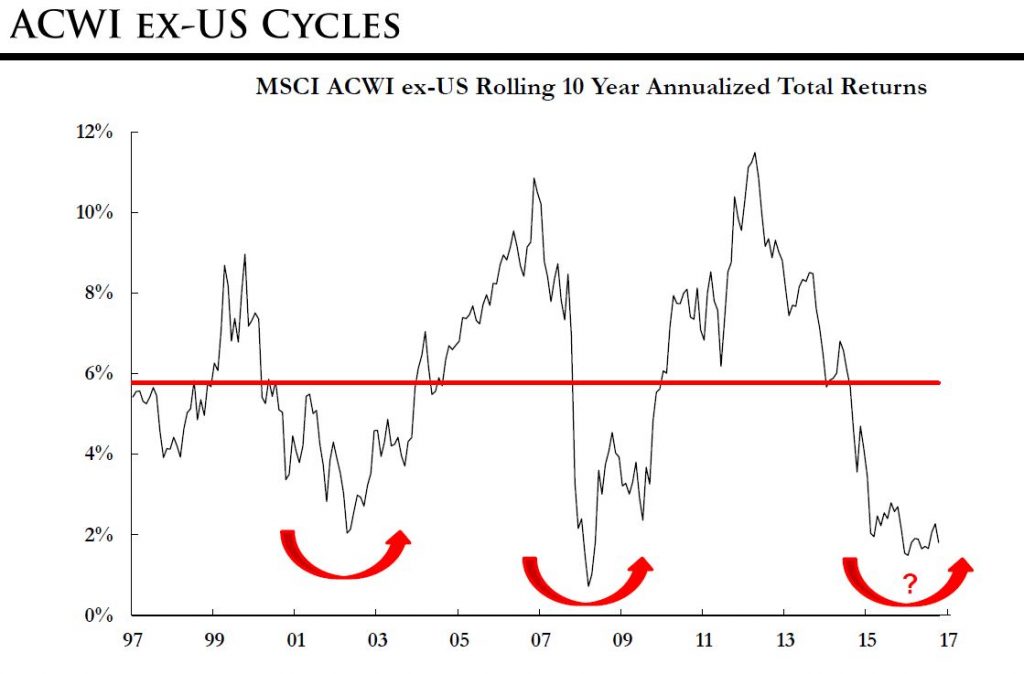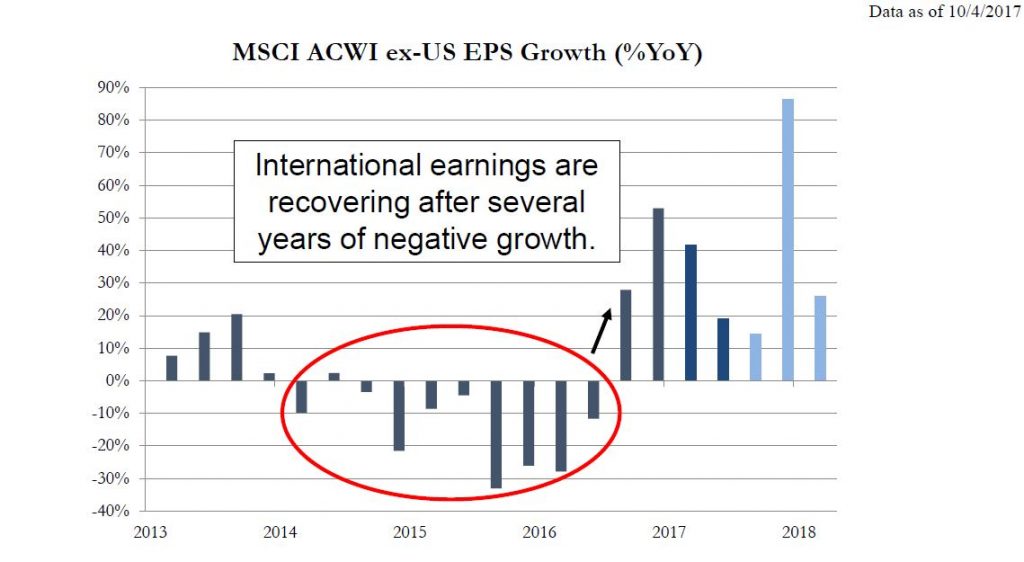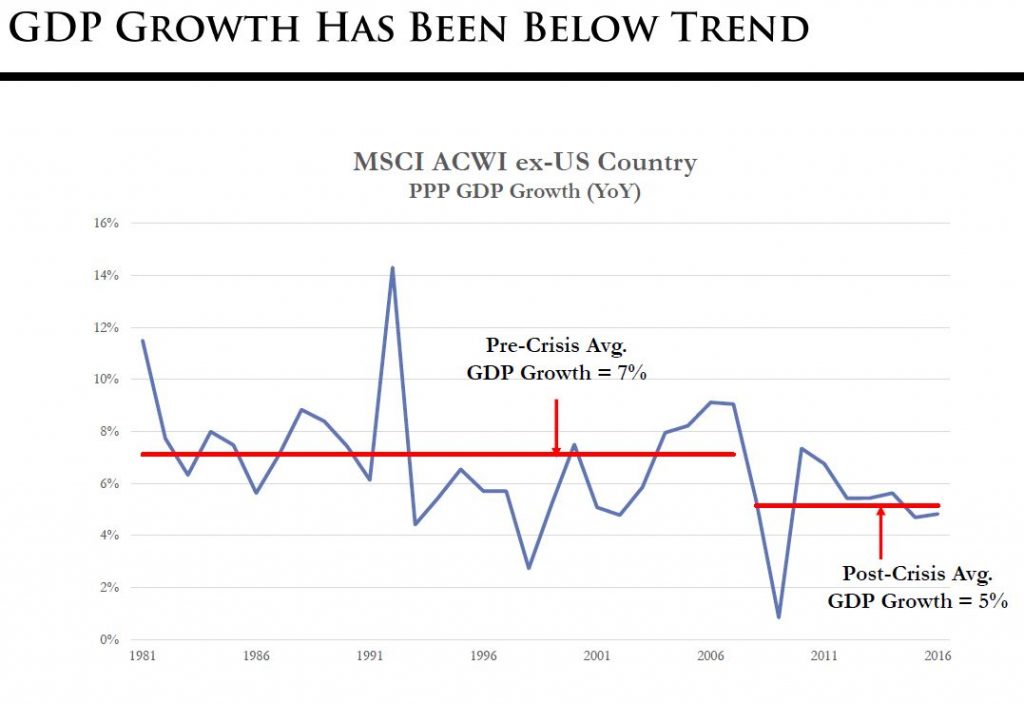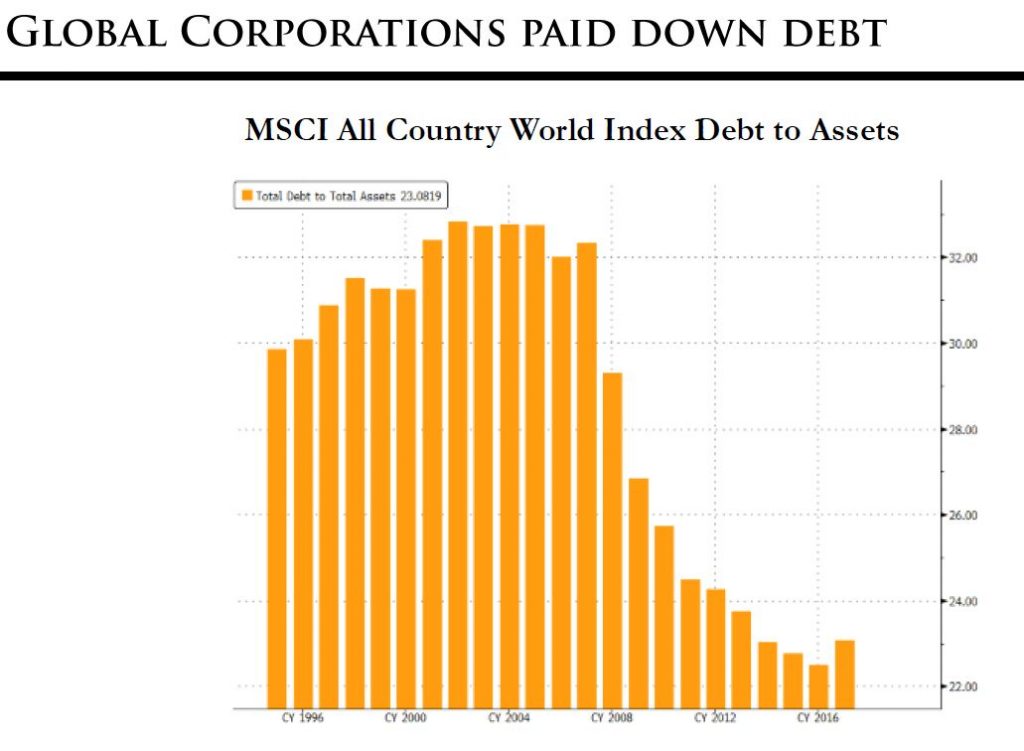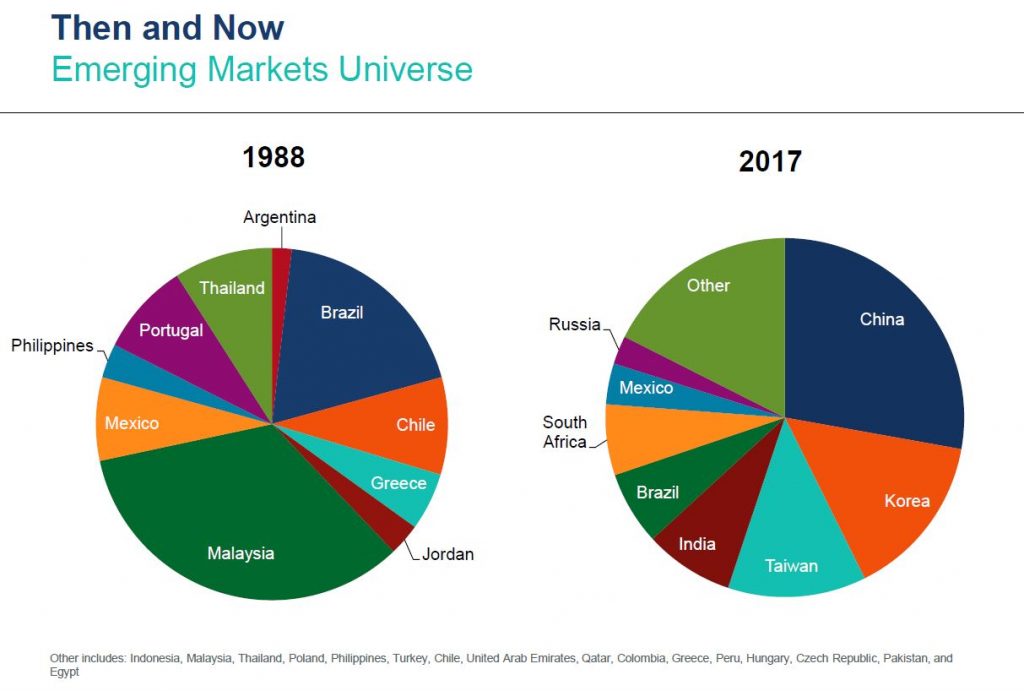Opportunities Abroad
The strong performance of the S&P 500 and the Dow Jones Industrial Average in 2017 was an encouraging sign for investors. While the above-average returns of U.S.-based investments receive a lot of attention in financial news outlets, international equity markets often fly under the radar.
As our team evaluated performance benchmarks both at home and abroad, we observed that the surge in U.S. equity markets mirrored a bullish trend that is happening across the globe. The scorecard is in: International markets – and especially emerging markets – actually outpaced the S&P 500 in 2017 (see figure 1).
The big question: Is the recent boom in international equity markets a fluke, or is it a sign of a greater long-term trend?
Figure 1. A comparison of 2017 market performance for three indices indicates that international markets outperformed U.S. benchmarks. Emerging markets led the way with a 33% return.
The Global Economic Reset
As with U.S. markets, international equity markets are cyclical by nature. After several years of lackluster performance, earnings in foreign markets are beginning to show the promise of recovery and growth (see figure 2a – the red line provides context for average annual returns).
We also observed that – despite modest growth in the U.S. – much of the global economy had been experiencing a recession since 2015, with a marked decline in global GDP growth and annual returns that were far below average (see figure 2b).
Figure 2a. Similar to U.S. markets, international equity valuation is subject to cyclical fluctuations over time.
Figure 2b. The drop in global GDP in 2015-2016 was almost as severe as the Great Recession of 2008-2009.
In addition to the cyclical ebb and flow of equity value, various additional economic and geopolitical factors suggest that a sustained upward trend in international markets could be on the horizon. The underlying fundamentals that drive market growth are strong, which could give way to a phenomenon known as the Global Economic Reset. We see the potential opportunity for pent-up consumer demand – coupled with significant improvements to the balance sheets of global corporations – to be translated into growth.
First, we have monitored the earnings per share growth of the All Countries World Index (excluding U.S. markets) over the past five years. Earnings have finally begun to recover after several years of negative growth, and the projections for 2018 are quite optimistic by comparison (see Figure 3). When coupled with the corresponding trends in GDP growth shown in Figure 2b, the outlook for international investing appears to be promising.
Figure 3.
By expanding our vantage point to examine the past 35 years, we observe that annual GDP growth from 1981-2008 (the “pre-crisis” time period) averaged 7%. In comparison, annual GDP growth from 2008-2016 has been about 5% on average. We anticipate that this metric may move closer to the 7% equilibrium over the long term – indicating that several years of above-average returns may arise within the near future.
Figure 4. The post-recession GDP growth of nations outside the U.S. has lagged behind the average annual growth rate of 7% from 1981-2008.
In addition to the economic indicators shown thus far, geopolitical factors have also created a scenario that could be ripe for strong international investment performance. When citizens are dissatisfied with the state of their nation’s economy – particularly in the case of a prolonged recession – democratic elections tend to favor candidates that propose pro-growth policies.
Alternatively, the current government leadership that is seeking re-election will make an effort to respond to the pleas of their business owners and workers so they can retain power. The results of upcoming elections and other political developments across the EU and Asia could have a profound impact on the growth outlook of the global economy.
Last by not least: Global corporations have made significant strides in improving their balance sheets. Whereas the ACWI debt-to-equity ratio for corporations ballooned to more than 32% in the early 2000s, a massive amount of debt has been paid off in the lead-up to the Global Economic Reset. The current debt-to-equity ratio is now about 23% – meaning that global corporations have much more capital to invest in the production of goods, delivery of services and labor (see figure 5).
Figure 5. Global corporations have made significant progress in reducing the amount of debt on their balance sheets, opening the door to more capital investment.
The synergy of these economic and political factors have created a “perfect storm” with the potential for strong international investment performance over the next few years. As a result of this trend, you could be well-served to include non-U.S. investments as a component of your diversified portfolio.
Balance in All Things
In addition to building a diversified investment portfolio for you, our CAS team works with our custodian partners to ensure that your international holdings are being rebalanced based on market trends and outlook in the global sector. Rebalancing involves a regular evaluation of how to best represent different equity classes in your portfolio.
In our evaluation, we consider a wide range of factors – two of which are national/regional performance trends and performance by industry. To illustrate this, let’s take a closer look at emerging markets in particular.
In figure 6, we observe that the international investing landscape has changed drastically since the late 1980s. As an example, Malaysia represented a large cross-section of the emerging markets universe in 1988; today, Malaysia is no longer a major player. China, Korea and Taiwan have emerged as the leading emerging markets, whereas many of the Latin American economies have fallen from prevalence.
Clearly, international markets are subject to the same steady, constant changes as U.S. markets, and the long-term effect of these fluctuations can lead to dramatic changes over the course of 30 years.
Figure 6. The emerging markets landscape has shifted dramatically over the past three decades, with Southeast Asia gaining prominence and Latin America/Malaysia receding.
The microcosm of emerging markets provides us with insights that can be applied broadly to the big picture of your financial plan. The need for diversification and regular rebalancing cannot be understated. By recognizing change and emerging opportunities over time and incorporating an appropriate balance of international markets within your portfolio, our team will work with you to capitalize on promising investing opportunities at home and abroad.
Contact your advisor to learn more about how CAS leverages international investments as part of your comprehensive financial plan.



